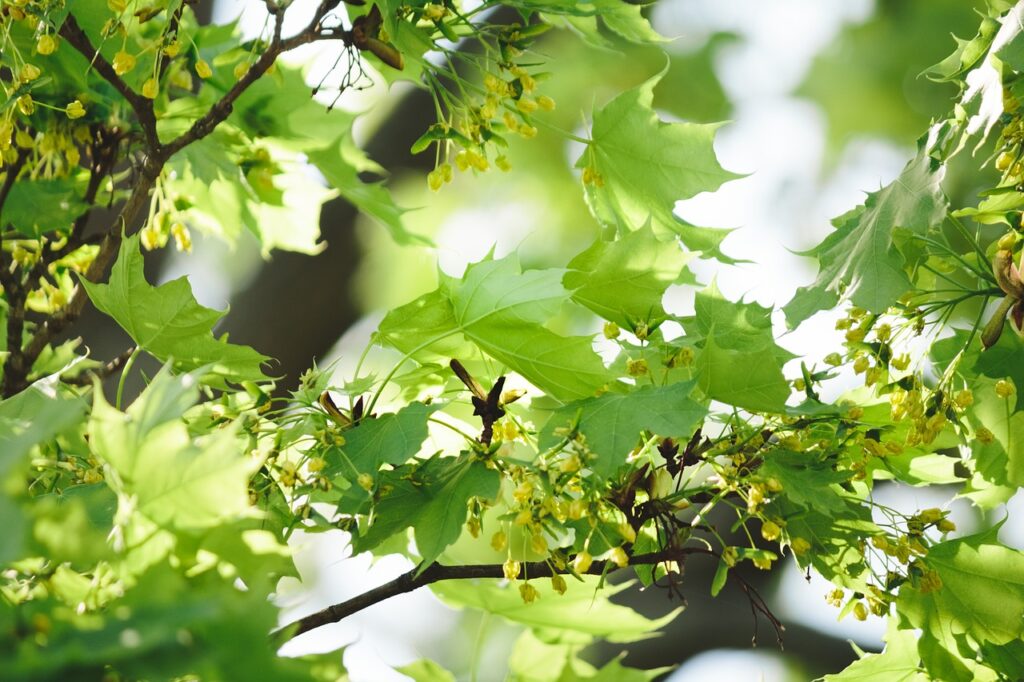
Photosynthesis happens when plants, algae and some bacteria use light energy from the sun to convert carbon dioxide and water into glucose and oxygen. For plants, the light energy is captured by chlorophyll, which gives them their green colour. Carbon dioxide is brought in from the air through stomata on the underside of the leaves, and water sucks up from the ground through the roots. Oxygen is released as a by-product, while glucose is used as a building block to create carbohydrates, fats and proteins that provide energy and nutrition.
Photosynthesis: solar energy + carbon dioxide + water → glucose + oxygen.
Photosynthesis is essential for maintaining life on Earth and the balance of the Earth’s ecosystem by producing oxygen and energy-rich compounds that act as nutrients for organisms further up the food chain.
Source
Naturskyddsföreningen – The water cycle and photosynthesis ![]()
October 2023, TÄNKOM | Revised November 2023 RETHINK



